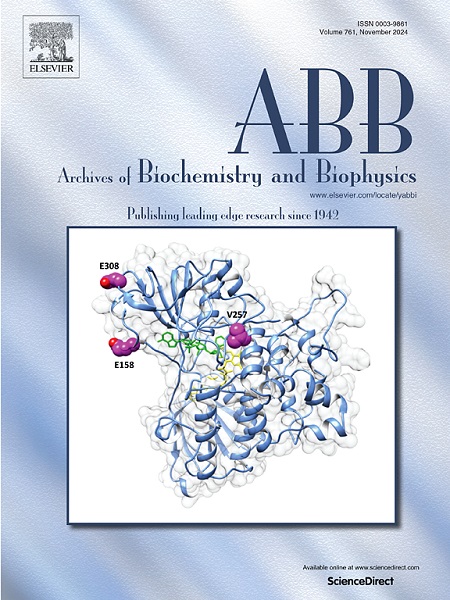Uncoupling protein 1 deficiency leads to transcriptomic differences in livers of pregnancy female mice and aggravates hepatic steatosis
IF 3.8
3区 生物学
Q2 BIOCHEMISTRY & MOLECULAR BIOLOGY
引用次数: 0
Abstract
Pregnancy requires the coordination of metabolically active organs to support maternal nutrition and fetal growth. However, the metabolic cross-talk between adipose tissue and liver in females during pregnancy is still less clear. In this study, we evaluated the metabolic adaptations and phenotypes of liver in response to pregnancy-associated metabolic stress, particularly in the context of genetic ablation of Uncoupling protein 1 (Ucp1)-mediated catabolic circuit. Our results revealed that Ucp1 deficiency (UCP1 knockout, KO) mice during late pregnancy exhibited significantly deteriorated metabolic phenotypes, including hepatic steatosis and whole-body glucose and lipid homeostasis, as compared to Ucp1 deficiency or normal pregnancy mice. However, non-pregnant Ucp1 deficiency mice displayed nearly normal metabolic phenotypes and structure alterations similar to those of littermate controls. Moreover, transcriptomic analyses by RNA sequencing (RNA-seq) clearly revealed that Ucp1 deficiency led to a significant liver metabolic remodeling of differentially express genes (DEGs) before and especially during pregnancy. Consistently, Gene Ontology (GO) and Kyoto Encyclopedia of Genes and Genomes (KEGG) analyses demonstrated the potential altered functions and signaling pathways, including metabolic dysfunctions in ribosome, oxidative phosphorylation, etc. Importantly, as derived from trend analyses of DEGs, our results further revealed the distinct expression pattern of each subcluster, which coincided with potential biological functions and relevant signaling pathways. The findings in the present study might provide valuable insights into the molecular mechanism of metabolic dysfunction-associated fatty liver disease (MAFLD) during pregnancy. Additionally, our data may provide a novel animal model of MAFLD, thus facilitating its potential therapies.
New & noteworthy
Genetic ablation of Ucp1 during pregnancy increases hepatic steatosis and deteriorated whole-body glucose and lipid homeostasis. Moreover, changes in hepatic gene expression are closely associated with metabolic dysfunctions in ribosome and oxidative phosphorylation. This work highlights the therapeutic potential of targeting UCP1- mediated catabolic circuit between adipose and liver during pregnancy, and the utility of RNA-seq analysis to reveal valuable information for the distinct expression pattern of each subcluster that contribute to pregnancy-dependent MASLD progression.

妊娠要求代谢活跃的器官相互协调,以支持母体的营养和胎儿的生长。然而,女性在妊娠期间脂肪组织和肝脏之间的代谢交叉对话还不太清楚。在这项研究中,我们评估了肝脏在妊娠相关代谢压力下的代谢适应性和表型,尤其是在基因消减解偶联蛋白1(Ucp1)介导的分解代谢回路的情况下。我们的研究结果表明,与 Ucp1 缺乏或正常妊娠小鼠相比,Ucp1 缺乏(UCP1 基因敲除,KO)小鼠在妊娠晚期表现出明显恶化的代谢表型,包括肝脂肪变性和全身葡萄糖和脂质平衡。然而,非妊娠 Ucp1 缺乏小鼠的代谢表型和结构改变与同窝对照组相似,几乎正常。此外,通过 RNA 测序(RNA-seq)进行的转录组分析清楚地显示,Ucp1 缺乏导致肝脏代谢重塑,在妊娠前,尤其是在妊娠期间,差异表达基因(DEGs)显著增加。基因本体(GO)和京都基因和基因组百科全书(KEGG)分析一致表明,Ucp1 基因可能改变了功能和信号通路,包括核糖体、氧化磷酸化等代谢功能障碍。重要的是,通过对 DEGs 的趋势分析,我们的结果进一步揭示了每个亚簇的独特表达模式,这与潜在的生物学功能和相关信号通路相吻合。本研究的发现可能会对妊娠期代谢功能障碍相关性脂肪肝(MAFLD)的分子机制提供有价值的见解。此外,我们的数据可能会提供一种新型的妊娠期代谢功能障碍相关性脂肪肝动物模型,从而促进其潜在的治疗方法。新颖性:妊娠期Ucp1基因消减会加重肝脏脂肪变性以及全身葡萄糖和脂质平衡的恶化。此外,肝脏基因表达的变化与核糖体和氧化磷酸化的代谢功能障碍密切相关。这项研究强调了针对妊娠期脂肪和肝脏之间由 UCP1 介导的分解代谢回路的治疗潜力,以及 RNA-seq 分析揭示每个亚簇不同表达模式的宝贵信息,这些表达模式有助于妊娠依赖性 MASLD 的进展。
本文章由计算机程序翻译,如有差异,请以英文原文为准。
求助全文
约1分钟内获得全文
求助全文
来源期刊

Archives of biochemistry and biophysics
生物-生化与分子生物学
CiteScore
7.40
自引率
0.00%
发文量
245
审稿时长
26 days
期刊介绍:
Archives of Biochemistry and Biophysics publishes quality original articles and reviews in the developing areas of biochemistry and biophysics.
Research Areas Include:
• Enzyme and protein structure, function, regulation. Folding, turnover, and post-translational processing
• Biological oxidations, free radical reactions, redox signaling, oxygenases, P450 reactions
• Signal transduction, receptors, membrane transport, intracellular signals. Cellular and integrated metabolism.
 求助内容:
求助内容: 应助结果提醒方式:
应助结果提醒方式:


